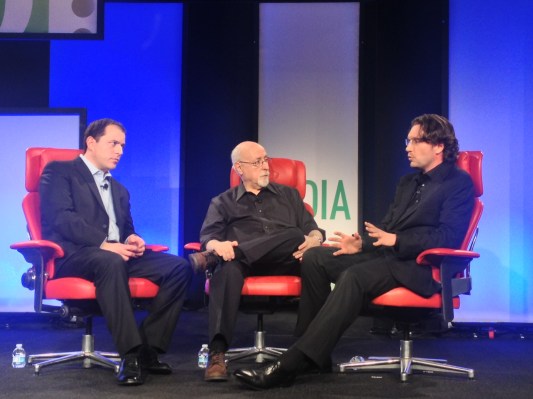Intel wants to be in the video business, and over the past few years has been investing heavily to build a new virtual cable service. The idea is that the company would to provide the same type of bundled TV content as Comcast, Dish, and others, but would deliver that content by streaming it over the Internet. Today Erik Huggers, GM of Intel’s Media division, was at D: Dive Into Media conference, providing a few more details about the chip maker’s efforts to build its own virtual cable service.
The key takeaway? The service will be available by the end of the year, but it won’t be labeled Intel.
“We will deliver a new cosumer electronics product under a new brand,” Huggers said. He said the company will launch an Intel-powered device with “beautiful industrial design” that is powered by an Intel chip. According to Huggers, that device will deliver live TV, catch-up TV, and on-demand TV.
Huggers said that the service will probably not be priced any more cheaply than existing bundled services, but will provided a better service than what’s available today through traditional cable distribution companies. “We believe that there is value in bundles, if bundles are done right,” he said. “There is real value in that.” In other words, the company won’t be looking to change the industry by going purely a la carte.
How Intel’s TV service will differentiate itself is through more advanced personalization and recommendation services. One way that it will do that is through recognizing who’s actually watching the TV. Part of that will be enabled through a camera (which some might find creepy). It ultimately believes that will provide a better service to consumers by delivering content personalized for the user. “There’s real value in being able to identify who’s watching,” Huggers said.
The new service has been a long time coming. Initial reports around Intel’s video ambitions first began surfacing when Intel hired him back in 2011. Since then, the company has been putting together the pieces it needs to deliver that service. While Intel will have its own product, the service is also expected to be available on other devices like the iPad, iPhone, and other mobile and tablet devices through various apps.
Given his experience Huggers had in the U.K., he said it would be important to deliver to multiple devices. However, he said that rather than just building apps for all of the different devices out there, it was necessary to build a device of its own. “If we want to deliver the experience that we have in mind, there is not platform out there today where we can do that,” Huggers said. “In order to do that, you need to control everything.”
